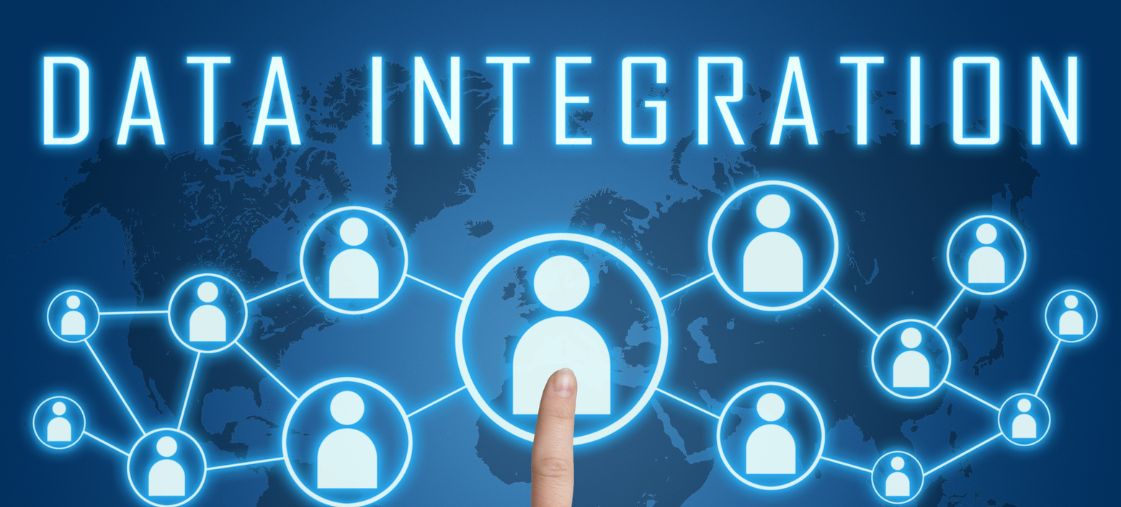
How to Leverage Data Integration Solutions for CDP Success
Customer Data Platforms (CDPs) have transformed how businesses manage customer data. These powerful tools gather, combine, and analyze customer information from various sources, providing a complete view of each customer’s journey.
Data integration solutions are essential for successful CDP implementation. They enable businesses to:
- Connect different data sources smoothly
- Create up-to-date customer profiles
- Deliver personalized experiences on a large scale
- Ensure data accuracy and consistency
The combination of CDPs and data integration solutions allows organizations to turn raw data into valuable insights. By using these technologies together, businesses can:
- Eliminate data barriers
- Improve customer segmentation
- Run targeted marketing campaigns
- Boost customer engagement metrics
Effectively implementing data integration solutions within your CDP system can greatly impact your business results. As customer expectations continue to change, mastering this integration becomes crucial for staying competitive in today’s digital world.
In this rapidly changing environment, businesses are increasingly turning to advanced strategies like native advertising to reach their target audience more effectively. With tools such as Anstrex, companies can spy on profitable native ads and build winning advertising campaigns that yield better returns on investment.

The Evolution of Customer Data Platforms
Customer Data Platforms (CDPs) were created to address the growing complexity of managing customer data in the digital age. A CDP acts as a central database that gathers, organizes, and activates customer data from various sources, providing a single, accurate view of customer information.
The journey of CDPs has undergone significant changes:
Early Stages (2013-2016)
During this period, CDPs had limited capabilities, including:
- Basic data collection abilities
- Few integration options
- Manual processing of data
- Fixed customer profiles
Modern CDP Capabilities
CDPs today have advanced features such as:
- Processing data in real-time
- Segmenting customers in more sophisticated ways
- Integrating data across different channels
- Using artificial intelligence for insights
- Predicting future behavior through analytics
Today’s CDPs create dynamic, real-time customer profiles by combining various types of data:
- Demographic information
- Behavioral patterns
- Transaction history
- Social media interactions
- Website activity
- Mobile app usage
These platforms have evolved from basic tools for collecting data to complex technology solutions that enable personalized experiences for customers. Modern CDPs use machine learning algorithms to anticipate customer behavior, automate marketing efforts, and deliver tailored content across multiple channels.
The technological advancement of CDPs has allowed businesses to go beyond simple segmentation and create highly detailed individual profiles that update instantly. This evolution reflects the growing demand for personalized experiences and the necessity for businesses to adapt quickly to shifting preferences.
Current Trends in Customer Data Platforms
The CDP landscape continues to evolve with groundbreaking innovations reshaping how businesses connect with their customers. Here’s what’s driving CDP development in today’s market:
1. AI-Powered Predictive Analytics
- Real-time behavior prediction capabilities
- Advanced customer segmentation using machine learning
- Automated decision-making for personalized content delivery
2. Privacy-First Architecture
- Built-in compliance with GDPR, CCPA, and emerging regulations
- Zero-party data collection mechanisms
- Enhanced data encryption and security protocols
3. Cross-Channel Integration
- Seamless connection between online and offline touchpoints
- Voice data integration from smart devices
- Social media sentiment analysis and response automation
These trends are transforming marketing strategies through:
- Dynamic Personalization: Creating unique experiences based on real-time customer interactions
- Automated Campaign Optimization: Using AI to adjust marketing efforts for maximum impact
- Enhanced Customer Journey Mapping: Tracking and responding to customer behavior across multiple channels
The impact on customer engagement is significant:
“Businesses using modern CDPs report up to 2.5x higher customer satisfaction rates and a 3x increase in campaign effectiveness” – CDP Institute Research
The integration of blockchain technology adds another layer of innovation, enabling secure data sharing and enhanced transparency in customer interactions. No-code interfaces are democratizing CDP usage, allowing marketing teams to create and modify customer segments without technical expertise.
Leveraging Data Integration Solutions for CDP Success
Data integration solutions are essential for successful Customer Data Platform (CDP) implementations. They turn raw data into valuable insights about customers. These solutions connect various data sources, standardize formats, and establish a single reliable source for customer information.
Key Integration Components for CDP Success:
- Real-time data synchronization
- Automated data cleansing protocols
- Cross-platform compatibility
- Scalable architecture design
- Privacy compliance frameworks
The integration process faces several technical challenges that require strategic solutions. Data silos, inconsistent formats, and duplicate records can compromise the accuracy of customer profiles. Advanced integration tools address these issues through:
- Automated Data Validation
- Pattern recognition for error detection
- Duplicate entry elimination
- Format standardization across sources
- Smart Data Mapping
- Custom field matching
- Dynamic attribute correlation
- Historical data reconciliation
The benefits of robust data integration extend beyond basic data consolidation. Organizations experience enhanced customer segmentation accuracy, improved response times, and deeper insights into customer behavior patterns. Your CDP’s effectiveness directly correlates with the quality of your data integration strategy.
A well-implemented integration solution enables your CDP to create comprehensive customer profiles by combining:
- Purchase history
- Website interactions
- Social media engagement
- Support ticket data
- Email campaign responses
These unified profiles power personalized marketing campaigns, predictive analytics, and customer journey optimization across all touchpoints.
The Role of Marketing Technology in Shaping Customer Data Platforms
The rapid evolution of marketing technology has transformed customer data platforms (CDPs) into sophisticated tools that deliver highly personalized customer experiences. By integrating MarTech solutions with CDPs, businesses can create a powerful system that enhances marketing effectiveness through data-driven decision making.
AI-Powered Marketing Capabilities:
- Predictive analytics for customer behavior forecasting
- Real-time content optimization
- Automated campaign adjustments
- Smart audience segmentation
- Purchase pattern recognition
Modern CDPs use machine learning algorithms to analyze large amounts of customer data, finding patterns and trends that human analysts might overlook. These insights allow marketers to:
- Create dynamic customer segments
- Deploy targeted messaging at scale
- Optimize marketing spend
- Predict customer lifetime value
- Identify cross-selling opportunities
The partnership between MarTech and CDPs goes beyond basic data collection. Advanced features like natural language processing and computer vision improve customer interactions through:
- Chatbot optimization
- Image recognition for social media monitoring
- Voice data analysis
- Sentiment analysis
- Behavioral tracking
Marketing teams now use AI-driven CDP capabilities to automate complex decision-making processes, reducing manual intervention while improving accuracy. This technological convergence allows brands to deliver personalized experiences across multiple touchpoints, creating seamless customer journeys that drive engagement and conversion rates.
Centralized Customer Data Management: The Key to Personalization at Scale
Centralized customer data management transforms how businesses deliver personalized experiences at scale. A unified customer data hub creates a single source of truth, eliminating data silos and enabling precise targeting across multiple channels.
Key Benefits of Centralized Data Management:
- Real-time data synchronization across touchpoints
- Consistent customer experiences across platforms
- Reduced data redundancy and improved accuracy
- Enhanced compliance with data privacy regulations
- Streamlined operations and resource optimization
Your centralized data hub acts as a command center for personalization efforts. When customer data flows through a single, organized system, you gain immediate access to vital insights that drive meaningful interactions.
Consider a retail scenario: A customer browses products on your mobile app, adds items to their cart, but doesn’t complete the purchase. With centralized data management, you can:
- Track their behavior across channels
- Analyze their previous purchase history
- Identify their preferred communication methods
- Deploy targeted remarketing campaigns
- Offer personalized recommendations
This level of personalization becomes possible when you maintain a centralized view of customer interactions. Your marketing teams can access comprehensive customer profiles, segment audiences effectively, and create tailored campaigns that resonate with specific customer groups.
The scalability of centralized data management enables you to grow your personalization efforts without compromising on quality or speed. As your customer base expands, your unified data hub adapts to handle increased data volumes while maintaining consistent performance.
Conclusion
Strategic planning with CDPs is essential for businesses looking to succeed in today’s data-driven market. The success of implementing a CDP depends on a well-organized approach that brings together technology, data integration, and business goals.
The evolution of Customer Data Platforms has changed how businesses understand and connect with their customers. As discussed in this article about the CDP evolution, your organization can:
- Create unified customer profiles through intelligent data integration
- Deliver personalized experiences at scale
- Drive meaningful engagement across multiple channels
- Make data-backed decisions for marketing strategies
The future belongs to businesses that embrace these technological advancements. By implementing robust CDP solutions and leveraging data integration effectively, you position your organization to:
- Enhance customer satisfaction through targeted interactions
- Increase revenue with personalized marketing campaigns
- Improve operational efficiency via automated data management
- Build lasting customer relationships based on deep insights
The key to CDP success lies in your dedication to strategic implementation and continuous adaptation to evolving customer needs.


